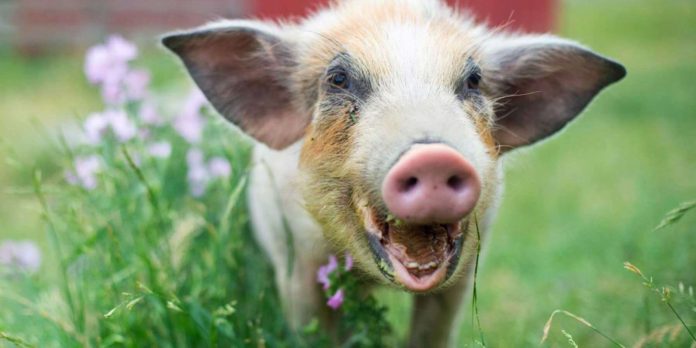The Travel + Leisure Global Vision Awards aim to identify and honor companies, individuals, destinations, and organizations that are taking strides to develop more sustainable and responsible travel products, practices, and experiences. Not only are they demonstrating thought leadership and creative problem-solving; they are taking actionable, quantifiable steps to protect communities and environments around the world. What’s more, they are inspiring their industry colleagues and travelers to do their part.
Humanity has a huge stake in protecting the natural world — and a lot to lose if we don’t. But climate change, pollution, development, and human-wildlife conflict are also having immense, potentially irrevocable impacts on the animal kingdom. It is clearer than ever that a healthy environment requires caring for an ecosystem at every level, whether that be the broader physical landscape or the lowest levels of the food chain. That care can mean anything from wildlife conservation to land rehabilitation, and even making sure practices like hunting and husbandry don’t come at the expense of our ethics. These Global Vision Awards honorees are protecting endangered species, confronting the abuses of factory farming, and re-establishing key wildlife populations that have been decimated due to colonialism and capitalism. In the process, they’re helping us re-envision how we relate to our fellow creatures. — T+L Editors
Decades before the world knew about the inhumane conditions taking place inside factory farms, Gene Baur had a hunch. The Cornell Agriculture graduate went undercover to expose the detrimental impacts of industrialized farming, not just on the animals but on the land, the workers, and the climate. In 1986, he took his dedication even further to co-found Farm Sanctuary: a 175-acre refuge for pigs, sheep, turkeys, and cattle caught in the cycle of big agriculture. The property in New York State’s Finger Lakes region has since expanded to add 100 acres (and welcomed a sister property, 45 miles north of Los Angeles) and rescued more than 1,000 animals. Today, six newly refurbished cabins and cottages (furnished mostly with vegan products) offer guests the chance to embrace a plant-based lifestyle while learning about ethical farming practices and assisting with daily barnyard tasks. Last year, of the approximately 3,000 visitors who spent the night, 70 percent said they’d make a change to their diet after a tour of the property, according to the analytics firm Faunalytics. “Farm Sanctuary exists in stark contrast to a cruel and destructive system,” Baur says. “The Sanctuaries are both a model and a message that, as human beings, we can and must do better.” — Heidi Mitchell
Mongolia River Outfitters + Fish Mongolia
Once upon a time, a fish called the taimen swam rivers from Europe’s Danube basin eastward to Asia’s Pacific coast. The largest member of the salmon family, taimen can grow to six feet long and more than 200 pounds, fattened by a diet of trout, grayling, and even beavers and gophers. (Taimen are apex predators.) But their range and numbers have shrunk drastically as their home waters have been polluted and dammed. All of the world’s five taimen species are listed as vulnerable or endangered, some critically, by the International Union for the Conservation of Nature.
Two of the world’s only taimen sanctuaries can be found in Mongolia. One is on the Onon River, a tributary of the Amur; the other is on the Delger, whose waters eventually join the Yenisey. The sanctuaries are managed by Mongolia River Outfitters and Fish Mongolia, both subsidiaries of the tour operator Nomadic Journeys that focus on fly-fishing expeditions. Only catch-and-release fishing is permitted in the sanctuaries — and only with permits, which are limited by the government to 100 per river per year. Dozens of jobs have been created, helping local communities see the value of healthy taimen populations; former poachers were hired as guides. Some 600 miles of river have been protected, helping both to stabilize taimen populations and to grow hope for their future. — Jeff Chu
For thousands of years, the Indigenous peoples of the northern Great Plains followed bison to the confluence of Opimihaw Creek and the South Saskatchewan River, in what is today known as Canada. At Wanuskewin — Cree for “seeking spiritual peace” — they hunted and trapped, camped and feasted. That ended in 1876, when a controversial treaty turned the land over to private speculators. But in 1992, it was returned to the region’s First Nations peoples and resurrected as a gathering place for prayer, dance, and traditional rituals.
Wanuskewin Heritage Park, a 741-acre reserve and cultural complex a few miles northeast of Saskatoon, tells the story of the land and its inhabitants through art and archaeological displays, as well as a restaurant that serves contemporary spins on Indigenous dishes — wild-rice burgers, for example, or fritters made from the three sisters (corn, beans, squash). The story is even told on the playground, which has structures inspired by beaver dams. CEO Darlene Brander hopes that the park will “serve as a living reminder of people’s sacred relationship with the land.”
An important step toward the restoration of the historic ecosystem came in 2019, when bison were brought back for the first time since the mid 1800s: six were transplanted from Saskatchewan’s Grasslands National Park, and five from the U.S., descended from Yellowstone herds. A few months later, chief archaeologist Ernie Walker found a rock partially unearthed by the animals’ grazing, wallowing, and walking. Walker cleaned it and discovered a petroglyph carved by an ancient ancestor — the first ever found there. It depicted a bison. “We don’t know what gifts the bison will bring next,” Brander says. “It’s up to them to tell us.” — J.C.
Credit: Source link






























